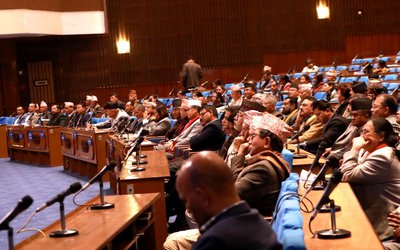More on News





The Government of Nepal opened the Khurkot Bridge over the Sunkoshi River, substantially enhancing connectivity between hilly regions of the country particularly Ramechhap, Dolakha, and Sindhupalchowk districts and the Terai districts.
The bridge was built with financial assistance from the Asian Development Bank (ADB).It will serve as an important link crossing the mid-hill highway and providing the shortest land route between the People’s Republic of China and India.
“Enhanced connectivity and mobility are vital for local economic development and poverty reduction. Khurkot Bridge will provide a vital lifeline to the people in the northern hilly terrainsalong the Sunkoshi River. It will link them to essential services offered in other parts of the country, and open up a wide range of opportunities such as high value agriculture, tourism, and trades. This bridge is truly a symbol of development,” said ADB’s Country Director for Nepal, Kenichi Yokoyama.
The 100-meter bridge, opened by Minister of TransportBimalendraNidhi, was completed at a cost of $1.8million. “Before the construction of the bridge, people and cargo had to first cometo the capital city of Kathmandu and then travel to the Teraidistricts which was time consuming, costly, and cumbersome. The opening of the bridge has connected Ramechhap and Dolakha districts directly to Terai for the first time by road networks,” said UmeshanandaMisra, Project Director in the Department of Roads.
The $55.2 million Roads Connectivity Sector I Project, of which the Khurkot Bridge is a part, is being completed in 12 districts. A total of 318km of strategic roads have been upgraded to fair weather standards under the project. Three district headquarters have been connected to all weather roads for the first time, including Dhunche of Rasuwa, Manthali of Ramechhap, and Taplejung of Taplejung districts.
The main objective of the project is to reduce the isolation of remote rural communities, mostly in hilly regions by enhancing access of the isolated and disadvantaged population to the basic services and employment opportunities. With improved connectivity, they will have easier access to health and education in major towns and district headquarters. Improved connectivity will also substantially reduce the price of basic consumer goods while enhancing the farm gate prices of agriculture products in large areas adjacent to the roads. The project is also helping to increase awareness about HIV/AIDs and anti-trafficking.






